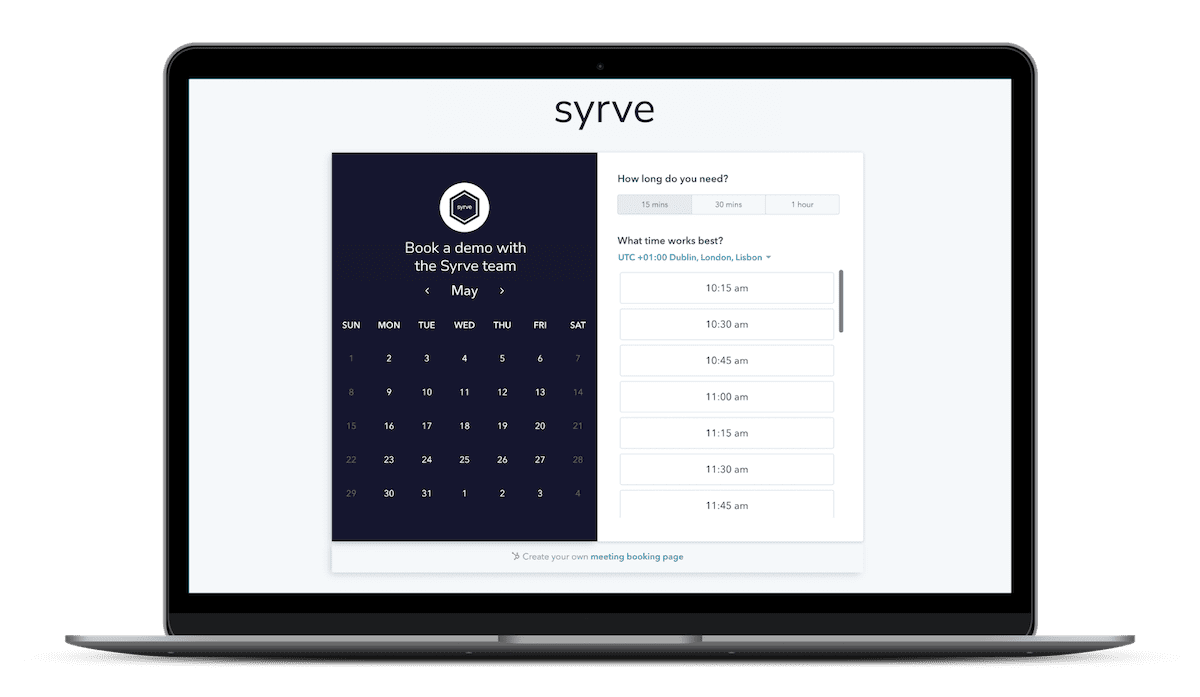The seventh instalment of How Syrve Works has landed. And this month we’re looking at notifications - a vital element of our self-driving restaurant management system that keeps decision-makers informed and ready to act whenever required. So why are notifications so important to a semi-autonomous system such as ours?
Why Are Notifications So Important for a Self-Driving Restaurant Management System?
Notifications are absolutely critical for a self-driving management platform because they keep managers and decision-makers informed about key events. This might include inventory shortages, the breaching of performance threshold limits, staff actions and impending stock checks.
In essence, they allow operators to be proactive instead of reactive and make informed decisions that keep their restaurants running smoothly.
Although automation is transforming the restaurant sector, the technology is only really as powerful as the information it communicates. Even in a self-driving context, human oversight remains critical. It guides decisions, validates exceptions and keeps operations aligned with real-world dynamics.
But having viewable information such as reports and data isn’t enough. In such a hectic environment, managers don’t have time to constantly monitor dashboards or chase down updates. They need the system to tell them when something requires their attention.
How Syrve’s Notifications Work
Syrve features a comprehensive notification system that’s available in the Professional and Enterprise subscription tiers. Configured in Web-Based Office, it’s divided into multiple channels that relate to specific operational areas including:
- Inventory
- Forecasting
- Invoicing
- Cash Verification
- Supplier Purchases
- Labour Costs
- Accounting
Within each of these areas is a range of triggers that generate the alerts such as stock count variances, open/closed till shifts, new forecasts, supplier order creation and staff schedule changes (a more complete list is included at the end of the article). Priority statuses from low to high are assigned to each event according to their severity.
Delivery Modes and Notification Types
The alerts themselves are sent via email or through a Telegram Channel. In addition to notifications, it’s possible to set up Info Digests - these are basically summarised sales reports that can be set for specific time periods. Let’s take a closer look at each of these modes individually and how to set them up.
.jpg?width=636&height=424&name=13.11_Incontent1%20(1).jpg)
Email Alerts
Email alerts are central to Syrve’s notification system, comprising reliable, structured information to managers. As well as critical insights, they provide a permanent, searchable trail of communication that can prove invaluable for later analysis, accountability and long-term decision-making.
Email alerts are configured under System Settings in the Web-Based Office. They’re known as subscriptions and can be created by hitting the ‘add’ button in the corner of the dashboard. When adding a subscription, you’ll be presented with a side panel requiring you to enter a subscription name and then choose a channel (see above).
You then choose a priority level that allows you to specify which events you’d like to be notified about – a useful feature if you want to avoid being inundated with non-critical notifications.
There’s also a drop-down menu for choosing recipient lists. These lists contain employees that have been assigned with different roles in Syrve’s Permissions section. So for instance, you can configure the system to send out notifications to employees who hold specific roles such as a cook, QSR cashier, manager, waiter, system administrator and so on.
.jpg?width=636&height=424&name=13.11_Incontent4%20(1).jpg)
Telegram Alerts
While there’s no doubting the usefulness of email notifications, the fact is that they sometimes get buried in crowded inboxes. Telegram alerts on the other hand, offer a more visible alternative, delivering messages directly to devices. Like email notifications, they’re also extremely useful in terms of off-site management.
With Syrve, set-up is a relatively straightforward process. The first step is to create a private channel in the Telegram mobile app. Then you add the Syrve App Notification Bot as an administrator and activate all of its admin rights, apart from ‘Add New Admins’
Once you’ve done this, you create a passphrase in Web-Based Office, create a subscription and select Telegram from the Channel List. The channel you created earlier should then appear from a drop-down list.
.jpg?width=636&height=424&name=13.11_Incontent6%20(1).jpg)
Info Digests
Info Digests are another useful feature that perfectly illustrate the real value of smart notifications in a self-driving restaurant management system. From Syrve’s powerful but extremely detailed analytics suite, the system extracts key performance indicators, inserts them into an email as a summary, and sends the email out to predefined recipients.
As a result, managers and decision-makers have at-a-glance information that allows them to make faster, more informed decisions on-the-fly. Syrve’s Info Digests include some of the following KPIs:
- Total Sales by Store/Chain
- Total Revenue by Store/Chain
- Store Performance Rankings
- Customer Traffic
- Time to Be Served
- Average Spend
- Performance v Forecasted Performance
Setup is similar to email. From within the Info Digests section under Notifications, select add, enter a title and description. Then choose sending frequency. Daily updates are sent out each morning, weekly digests are sent on Monday mornings and monthly updates are sent on the morning of the first day of each month.
After choosing your preferred frequency, you can either select recipients according to their roles or email addresses. You then get the option to choose the format. You have two options here: Sales Summary or Sales Stats by Store. Sales Summary includes information on sales for a specific store, while Stats by Store presents sales data that’s broken down by each restaurant in a chain.
To summarise, Syrve’s notifications system ensures that important operational information reaches the right people at the right time. Each delivery method has its own advantages.
Email alerts provide structure, auditable reports. Telegram alerts offer instant visibility to busy managers and Info Digests present at-a-glance data for quick strategic insights. Each channel plays a critical role in keeping operations running smoothly.
Final Thoughts
The ability to translate complex information into clear, actionable data is a core strength of Syrve’s platform. And this same quality extends to its notification system. Even as automation continues to transform the hospitality sector, human oversight remains indispensable.
Systems can process data and predict demand with remarkable precision. But human judgement can’t yet be replicated. This is why notifications remain a crucial link between automation and action.
Syrve Alerts List
Forecasting Notifications
- New Sales Forecast Creation
- Sales Forecast Edited By Employee
- New Product Sales Forecast Creation
Inventory Notifications
- Significant Inventory Count Variance
- Expired Stock Check
Cash Verification Notifications
- Open/Closed Till Shift
- Employee Refund Processed
Purchasing Notifications
- New Order Creation
- Unconfirmed Order Reminder
- Order Sending Error
- Shipment Document Sent/Approved
- Supplier Order Confirmation/Rejection
- Order Deadline Approaching
Labour Costs Notifications
- Staff Schedule Change Made
Technical Notifications
- Lost/Restored Server Connection
- Cached KPI Deviations from Server Data
Write-Offs Notifications
- Write-Off Created by Employee
- Write-Off Creation Error Made

.png)

